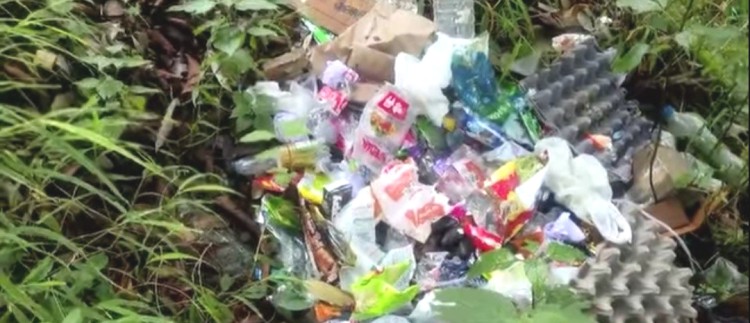




















Friday, Oct 10, 2025 23:15 [IST]
Last Update: Thursday, Oct 09, 2025 17:43 [IST]
GEYZING,: Despite repeated awareness
campaigns on waste management conducted by government agencies and non-profit
organizations every year, lack of civic sense among residents continues to be a
glaring issue, especially in urban areas. Geyzing, the district headquarters
town, has not remained untouched by this persistent problem.
Geyzing
Nagar Panchayat (GNP), the town’s civic body, has been making sincere efforts
to address the waste management crisis through various initiatives. However,
these efforts appear insufficient in comparison to the rising population and
the corresponding increase in waste generation.
The
GNP has deployed waste collection vehicles to cover households across the town,
and penalties are imposed on defaulters. Closed-circuit cameras installed in
the town’s main market areas also monitor individuals who flout sanitation
norms by dumping waste irresponsibly. While these measures have improved
surveillance, they have inadvertently driven some individuals to seek isolated
areas beyond the reach of CCTV surveillance to dispose of their waste.
One
such area, located between the Reythang cliff and the Christian community’s
graveyard along Geyzing-Sakyong road, is reportedly turning into an unofficial
dumping ground. Large heaps of domestic waste are scattered around the steep
terrain, giving the area an unsightly appearance and indicating that the site
has been used for dumping over a prolonged period. It is yet to be determined
whether the waste originates from the nearby Geyzing bazaar or surrounding
households.
According
to estimates, nearly two truckloads of waste could be retrieved from the steep
site.
GNP’s
bazaar officer Kesangla Sherpa denied that the waste could be from the town
bazaar. He stated that the Nagar Panchayat collects waste from every household
and transports it to the designated landfill site at Sicchey.
However,
as the town’s population continues to grow, so does the waste generated from
commercial establishments and residential areas. This raises a pressing
question: Does Geyzing have the infrastructure and capacity to effectively
manage its waste problem?
Some
local residents believe that the waste might be coming from households within
the bazaar area, and they argue that waste collection vehicles do not cover
rural areas. People in these villages, they say, have been managing their waste
independently for generations.
“Dumping
waste in a steep, landslide-prone area is a major concern. If this reckless
practice continues, residents living downhill may face serious risks in the
future,” warned a local resident.
Another
individual highlighted the vulnerability of the area. “The area just nearby the
site, along Geyzing-Sakyong road, has been devastated by continuous landslides,
sweeping away the stretch of road and compelling the authority to construct
alternative route. Throwing waste at a landslide-prone stretch reflects sick
mentality of the people. The defaulters should either be educated or
fined", said an individual.
Journalist
Narendra Rai stressed the need for waste management campaigns to move beyond
the confines of conference halls. He said that real change can only happen at
the grassroots level.
Authorities
need to be on the ground to assess the situation, he remarked.
Although
numerous government initiatives have been launched to tackle the issue of
waste, the ground reality paints a starkly different picture. Waste management
continues to be a teething problem, not just in Geyzing, but across the State.